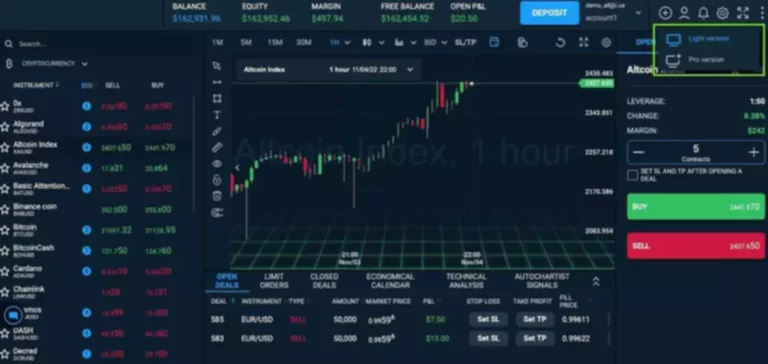Proof Of Labor Vs Proof Of Stake: Comparative Guide 2023
It serves as the spine to safe blockchain transactions, guaranteeing that they’re reliable and correct. Along with the way miners’ transactions are validated, there are two different important differences how ethereum proof of stake works between the two strategies — power consumption and danger of assault. A proof-of-work system requires quick computers that use giant quantities of vitality assets.
However, there are doubts in regards to the safety of PoS and PoW against threats. Therefore, the Chia project has launched a proof-of-space validation mechanism to securely validate transactions. Proof-of-stake eliminates the need for mining, which makes it extra energy-efficient. You also don’t want top-of-the-line technology to create new blocks in PoS.
Okt Chain
Both PoW and PoS assist to judiciously determine the state of the community, avoid double spending, and keep the integrity of blockchain transactions. To tackle the double spending downside in cryptocurrencies, a consensus protocol proves that a transaction is valid and that no coin is being spent twice. Proof of work (PoW) is a consensus mechanism that requires miners to compete against each other to resolve cryptographic equations and ensure each blockchain block rapidly. Additionally, PoS blockchains need specialized hardware (GPUs) like PoW mining equipment (ASICs) and different computing requirements, necessitating manufacturing sources. PoS miners should additionally keep energetic internet connections, which calls for vitality expenditure.
For example, if miner A has 30 coins, miner B has 50 cash, miner C has 75 coins, and miner D has 15 coins, then miner C with seventy five cash will have the precedence to validate the following block. Unlike the PoW system, the miner will obtain transaction fees as an alternative of block rewards. This ledger retains observe of all transactions, preventing customers from spending their funds twice, and is distributed to avoid tampering. A blockchain is a series of blocks organized chronologically based on a transaction order, often recognized as blockchain ordering. The first block in a PoW blockchain is identified as the “genesis block,” and subsequent blocks all the time refer to prior blocks, containing a complete and up to date ledger copy. Personal computer systems do not have the processing chops to mine Bitcoin and different aggressive cryptocurrencies.
It’s what lets lots of of hundreds of thousands of full strangers function on a shared monetary system with out having to belief a single controlling entity. In a proof-of-stake (PoS) situation, there are no miners competing to win the privilege of adding a new block to the chain. Instead, anyone collaborating within the network can be included within the strategy of including blocks by “staking” (versus mining) some quantity of coins. In a PoW surroundings, miners (basically, computer systems throughout the globe taking part in the network) compete to “mine” new blocks.
If you intend to put cash into crypto or blockchain tech, it’s crucial to understand the two distinct validation procedures, as each may take the event of blockchain know-how in numerous instructions. In PoS, the validator’s stake determines their likelihood of being chosen to add a new block of transactions to the chain. The larger the validator’s stake, the higher their likelihood of being chosen.
How Does Pos Work?
They are also randomly grouped into committees of nodes, which change daily. Every time a new block of transactions is created and added to the blockchain database, the PoS consensus mechanism selects a number of committees to “attest” that the block that’s been proposed is appropriate. This makes PoS an effective method to forestall cryptocurrency attacks since there isn’t any benefit to attackers disrupting the blockchain to steal or double-spend coins. To create a new block, miners on a PoW community compete towards each other to solve advanced mathematical problems in a course of known as hashing. These puzzles are robust to unravel, nevertheless it should be simple for the network to confirm the right answer.
- Our estimates are based mostly on previous market performance, and previous efficiency isn’t a assure of future efficiency.
- One such drawback is the “double spending” downside, which happens when somebody spends the identical quantity of cryptocurrency twice.
- Every single cryptocurrency is a decentralised network, so all of them want a consensus mechanism to discover out who owns the coins.
- The best choice for Ethereum is for validators to be run regionally on residence computers, maximizing decentralization.
- The validators are randomly selected to add new blocks to the chain, and the probability of being selected is proportional to their stake.
- Both PoW and PoS have a dedicated area on the planet of cryptocurrencies and blockchains.
Energy production at that level can emit 65 megatons of carbon dioxide each year into the atmosphere. PoS requires less power consumption and is more decentralized, however has not been examined as thoroughly as PoW in phrases of safety. Validators are chosen based mostly on their popularity and authority within the network, allowing for faster transaction speeds compared to different algorithms. Among these mechanisms are Proof of Work (PoW), Proof of Stake (PoS), and Proof of Authority (PoA) – each serving as a singular approach to securing transactions and maintaining trust within a decentralized community.
With proof-of-stake, the price of staking and the percentage return on that stake are the identical for everyone. When hashing to create recent blocks, miners race to give you the proper solution to math puzzles. The network is broadcasted by the miners who win the hash, enabling different miners to verify that the solution is valid. However, the consensus mechanism it makes use of is just one of the many components you presumably can contemplate when weighing a cryptocurrency investment.
Ready To Invest?
“The more computer systems that you should make positive the community is powerful and functioning, the more vitality that’s consumed.” “Two main benefits of proof of stake over proof of work are that PoS may be less energy intensive and have higher transaction throughput (speed) and capability,” says Hileman. In this article we’ll explore what consensus mechanisms are, and the way proof-of-stake differs from proof-of-work. Cryptocurrencies can fluctuate broadly in costs and are, due to this fact, not applicable for all traders. Trading cryptocurrencies isn’t supervised by any EU regulatory framework. Any trading historical past introduced is less than 5 years old unless in any other case acknowledged and should not suffice as a foundation for investment selections.
It’s at present the preferred consensus mechanism and secures over a trillion dollars’ price of cryptocurrencies. The staker who gets to supply the new block—a process referred to as minting or forging, as opposed to mining—is chosen at random. But the larger your stake, the better your odds of being the chosen staker. To become a “staker,” a person has to lock up, or stake, an quantity of the network’s cash for a time frame in accordance with a network-specified procedure. This normally entails software or a course of provided by a crypto exchange.
So earlier than deciding, think about asking what a cryptocurrency is designed to do, whether it does that appropriately, and whether or not it is widely used. But some critics worry that proof of stake might make it comparatively simple for individuals to pay attention power in a area whose adherents praise decentralization as a core worth. The extra proof-of-stake cryptocurrency you personal, the extra power you possibly can wield over the system. The two most popular consensus mechanisms are proof-of-work and proof-of-stake, which we’ll now explore.
Proof of work requires users to mine or complete complicated computational puzzles before submitting new transactions to the community. This expenditure of time, computing power and power is intended to make the cost of fraud larger than the potential rewards of a dishonest action https://www.xcritical.com/. Proof-of-work and proof-of-stake are two algorithmic methods that blockchain networks use to validate transactions. It permits any community participant to buy a stake in the network and turn into a validator.
The following sections discuss the professionals and cons of proof-of-stake’s security mannequin in comparability with proof-of-work. PoS advocates claim that it’s a more energy-efficient system by which particular person nodes take responsibility for creating new blocks as a substitute of competing towards each other. On the other hand, PoS is used when the community must process transactions faster. Validators sometimes own a large amount of the token, which inspires them to keep the network safe. The variety of crypto property they’ve staked determines their possibilities of being chosen to produce the following block. Proof of stake and proof of labor each have their place within the crypto world.
As the original consensus mechanism, PoW is often favored for its security and confirmed reliability. PoS is chosen for its scalability benefits and reduced environmental impression. Consensus mechanisms like proof of labor (PoW) and proof of stake (PoS) are the core components that link blockchain know-how collectively.
Once this had been secure and bug-free for a sufficient time, the Beacon Chain was “merged” with Ethereum Mainnet. This all contributed to taming the complexity of proof-of-stake to the point that the chance of unintended penalties or client bugs was very low. In centralized currencies, this problem is less common as a end result of the state has the power to enforce justice and forestall fraud.
In her spare time, she can be discovered buried nose-deep in a book, lost in her favorite cinematic world, or planning her subsequent trip to the mountains. Validators on a proof-of-stake community such as Ethereum are chosen at random by the community to propose new blocks. The most suitable choice for Ethereum is for validators to be run locally on residence computers, maximizing decentralization. This is why Ethereum resists changes that enhance the hardware requirements for working a node/validator.





